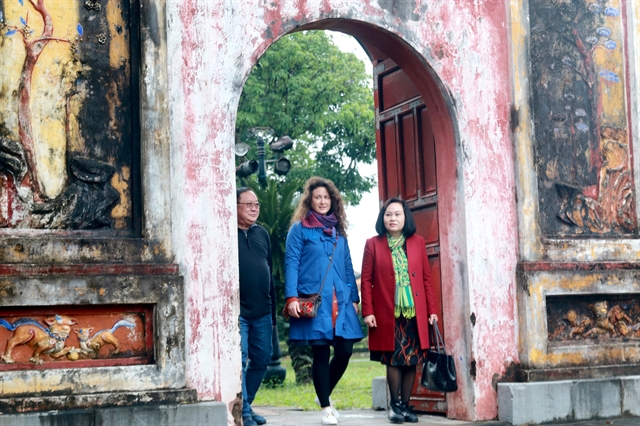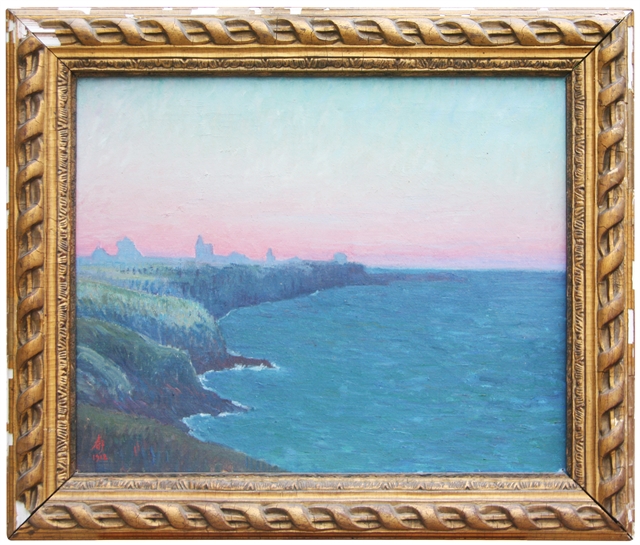Weather:
- Ha Noi 27oC
- Da Nang 29oC
- Ho Chi Minh 31oC
Lê Hương
Dr Amandine Dabat, a historian, would seem to be a typical academic investigating a Vietnamese monarch, save for one crucial fact: she is the great-great-granddaughter of King Hàm Nghi.
This familial connection lends her research a heightened level of credibility and significance, as she possesses intimate access to the king's personal effects and her family's historical archives.

Back to history
King Hàm Nghi, real name Nguyễn Phúc Ưng Lịch (1871-1944), was the 8th king of the Nguyễn dynasty. In 1884, he became a king at 13.
On June 6, 1884, the Nguyễn Royal Court signed the Patenotre Convention with the French, which officially facilitated the French to settle their regime all over Việt Nam. Two factions were inside the court: one supported the French, and the other opposed the French.
The king’s close mandarins Nguyễn Văn Tường and Tôn Thất Thuyết led the fight against the French in July 1885, though they were soundly beaten.

Tôn Thất Thuyết brought the King to evacuate from the Huế Imperial Citadel and called for people to support the King’s movement to fight against the French.
In 1888, King Hàm Nghi was captured by the French. Although the resistance movement continued in his name, he was forced into exile in Algiers, Algeria.
In 1904, he married Marcelle Laloe, a Frenchwoman, and had two daughters and a son.
He died on January 14, 1944, at 73. When Algeria gained independence, his tomb was moved to Thonac Village, in the central region of France, where the tombs of his wife and two of his children were also.
Vietnamese history recorded Hàm Nghi, Thành Thái (1879-1954) and Duy Tân (1900-1945) as three patriotic kings during the French colonial era.
Family secret
“Being a descendant of Hàm Nghi gave me the opportunity to discover the private archives of the King, all the papers and letters he kept all his life,” Dabat told Việt Nam News.
“The discovery of Hàm Nghi's papers at the beginning of my research is how I understood that even if the French government considered him a former emperor, a politician, a prisoner, Hàm Nghi considered himself an artist.”

Dabat didn't know they existed when she looked for these private archives.
“My family wouldn't have let any other historian look for private archives, as they didn't know themselves that these archives had been kept,” she revealed.
“The other point is that Hàm Nghi never spoke about his past to his wife or his children. His wife did not allow him to speak in Vietnamese to their children. So he did not say anything to his children about his culture.”
When Dabat was born five generations later, her family didn't know Hàm Nghi's history well.
When she decided to study King Hàm Nghi's life, she had many questions that nobody in her family could answer.
“Hàm Nghi was considered as a grand-father, a great-grand-father, my family was taking care of his grave, but his personal history was mostly unknown,” she said.
“Of course, my family knew that he had been exiled, that he used to be an emperor, then a prisoner. But nobody told me anything about that when I was a child. My family did not realise that he was a historical figure, a patriotic emperor, a national hero.”

Dabat has spent 13 years on this topic, including five years of her PhD.
“I am very lucky that the French archives did not disappear during the wars,” she said. “Most of the historical archives regarding Hàm Nghi are kept in the papers of the French government in Indochina and Algeria. Most of these papers were brought to France after colonisation.”
The eldest daughter of Hàm Nghi also took care of his personal papers. Dabat had many documents to do her research (about 2,500 private documents from Hàm Nghi himself).
“I travelled to Việt Nam and to Algeria to study the documents which remained there, but most of my work on the archives happened in France,” she said.
An artistic soul
Dr Dabat said Hàm Nghi's letters, in which he writes his feelings about exile, the beauty of nature, and art impressed her most.
She will have her French-language book on the King translated into Vietnamese and published soon in Việt Nam.
“It is very important to me to offer Vietnamese people the opportunity to know who Hàm Nghi was during his exile, what his life looked like, what happened to him, and which artist he was, what art he created,” she said.
“Hàm Nghi is not well known as an artist because of the context of his exile and because he never came back to Việt Nam.
“But he is the first Vietnamese modern artist as he learned fine arts from 1889, a decade before Lê Văn (Huy) Miến (1873-1943), considered as the first Vietnamese painter, who learned fine arts in Paris.”
Dabat has donated the King's water pipe to the Huế Monument Conservation Centre. Another person who wishes to remain anonymous has donated a painting made by Hàm Nghi that had been published in Dabat's PhD thesis.
“He took this water pipe with him when he was exiled from Việt Nam,” she said. “He used it all his life to smoke black tobacco he imported directly from Việt Nam.
“Bringing some of his belongings back to Việt Nam is a way of bringing a part of Hàm Nghi himself, who remains in exile after his death, as his tomb is in France.”
Dabat said Hàm Nghi is very present in her daily life as he is the topic of her work.
Reading all the private papers and letters of Hàm Nghi made her feel very close to him, as a very close friend.
“I had the feeling of understanding who he was, what he thought, how he felt, as he used to describe this in the drafts of his letters that he also kept,” Dabat said.
She said after her PhD thesis, the publication of her book in French was an important step to make Hàm Nghi better known as an emperor, but also as an artist, a painter, and a sculptor.
“With my research, I have shown that during his exile, Hàm Nghi was not interested anymore in politics,” she said. “He became an artist, and his life was led by art.”

Dabat hosted an exhibition of his artwork in the Museum of Asian Art in Nice in 2022.
The exhibition was a success, with 30,000 visitors. Many Vietnamese or Vietnamese-French visited the exhibition, and most of them were very touched to discover the artworks of their emperor.
“I was told that some people were so touched that they were crying when leaving the exhibition,” she said.
“I am very happy that the artworks of Hàm Nghi were shown and are opened to the world, especially because as he was a prisoner during his exile, he didn't feel free to show his works very often. He was so watched by the French police that he preferred to keep his artworks as a part of his private life.”
According to Dabat, some of Hàm Nghi's paintings and belongings will be loaned for exhibitions in Paris (Palais de la Porte dorée) and Berlin (Gropius Bau) this autumn.
Dabat also prepares an exhibition about Hàm Nghi in Vichy (France) in 2024. VNS

